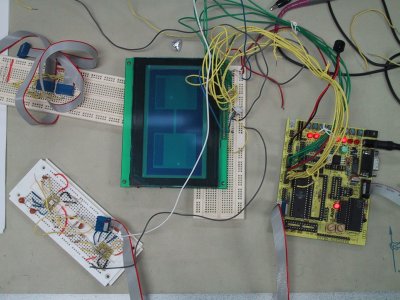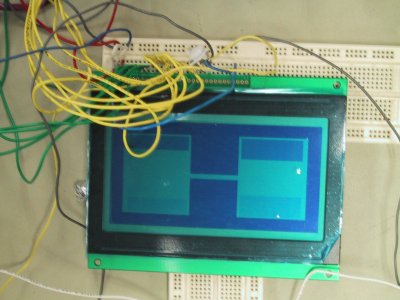| |
Results |
|
| |
-
The digital hourglass performed well. By putting in two accelerometers,
we were able to get a full range tilt angles. The hardest
part of the project was getting the LCD to work. Because of our bad luck,
we happened to pick a bad programming board each time we tried to get the
LCD to work. But upon finally getting it to work, everything else involved
coding issues.
-
Drawing the sand was complicated due to the
LCD only being able to write bytes, rather than bits. While writing the
algorithms, we just had to make sure that exceptions were checked for and
taken care of.
-
Finding the position of the sand was done by visualizing the various
possible sand positions and calculating it in relation to the area of
the sand in the hourglass. We tested this part in Matlab and it worked
beautifully.
-
One thing we had to be careful about was the data types. In doing
simple mathematical equations, we had to make sure that the data types
were the same. If they were not the same, then casting had to be done.
-
The accelerometer worked with no problems. We soldered the accelerometers
on a board made by Professor Land and tested it with the oscilloscope.
The main issue with the accelerometer involved having to output voltages
that were less than the Aref (from the A/D on the STK200). We were able
to lower some voltages, yet maintain a large enough range of voltages by
simply putting in resistors.
 The Complete Setup (Left: Two accelerometers on breadboard;
Middle: LCD; Right: MCU)
The Complete Setup (Left: Two accelerometers on breadboard;
Middle: LCD; Right: MCU)
 Hourglass tilted at "90" degrees
Hourglass tilted at "90" degrees
 Hourglass tilted at "45" degrees
Hourglass tilted at "45" degrees
|
| |
Next Time |
|
| |
|
If time permitted or in
future improvements of this project,
the following additional features can be added:
-
Make a curved hourglass and be able to draw in curved sand positions.
-
Develop an algorithm that takes timing and amount of sand into
consideration so that a real clock can be made out of the hourglass.
-
Package the hourglass so that it is a stand-alone component.
-
Add music (i.e. Jeopardy music) so that one can listen to sound as he thinks.
|
| |
Appendix |
|
| |
|
|
|